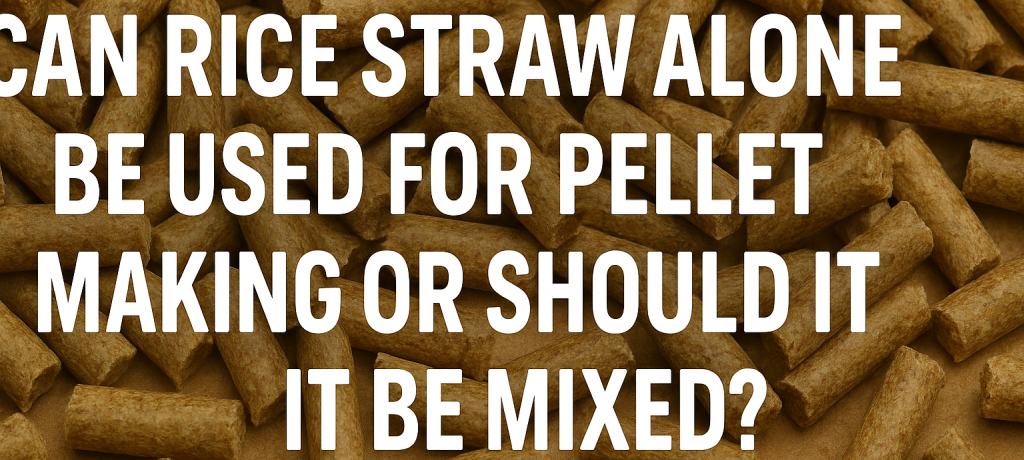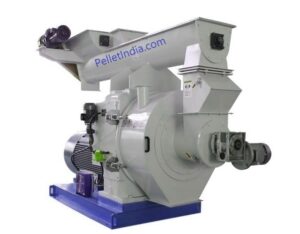Can rice straw alone be used for pellet making or should it be mixed? ✅ Can We Make Pellets from Only Rice Straw? Yes, it’s technically possible , but not advisable for the following reasons:
🔴 Challenges with Using Only Rice Straw: Low Bulk Density :Raw rice straw is fluffy with a bulk density of ~70–120 kg/m³. Difficult to feed uniformly into pellet mills. High Silica and Ash Content :Rice straw has 15–20% silica , contributing to:Higher ash content (12–16%) in pellets.Slagging and corrosion in boilers and furnaces. Causes abrasion of pellet mill die and rollers . Low Binding Properties :Poor natural lignin content in straw makes pellet formation weak. Leads to low durability and crumbling pellets . High Moisture Variability :Needs proper drying to 10–14% before pelletizing. Too wet or too dry material leads to poor pellet quality. ✅ Should You Use a Mix-and-Match Recipe? Yes. Mixing rice straw with other biomass is the preferred and practical approach.
👍 Benefits of Mixing: Improved Pellet Durability :Adding woody biomass, sawdust, or bagasse improves binding and structure . Lower Ash Content :Mixing with low-ash materials reduces the overall ash percentage of the final pellet. Better Combustion Performance :Balanced GCV, better ignition, less slagging in boilers. Enhanced Machine Life :Reduces wear and tear on die and rollers. 🔍 Suggested Mix Ratios (Example): Ingredient Ratio (%) Rice Straw 50–60 Sawdust or Wood Chips 30–40 Binder (e.g., molasses/lignosulfonate, optional) 0–5 Moisture Adjustments 10–14% final
⚠️ Why Not Use Direct Rice Husk or Straw in Boilers? Rice Husk: Silica forms clinker in boilers. Needs special design boiler. Rice Straw: Same issues plus bulky and hard to transport . High moisture and poor flowability in raw form. ✅ Pellet Advantages Over Direct Use: Aspect Raw Straw/Husk Pellets Energy Density Low (~2000 kcal/kg) High (~3500–4000 kcal/kg) Bulk Density Low High (600–700 kg/m³) Handling & Storage Difficult Easy & compact Combustion Quality Poor Controlled & uniform Transport Efficiency Low High
🔚 Conclusion: 🔥 You can use only rice straw, but expect lower efficiency and pellet quality . ✅ Best practice: Blend with other biomass for better pellets. 🚫 Direct use of raw rice husk/straw in boilers is inefficient and harmful to equipment. ⚠️ Disclaimer:
The information provided is for educational and planning purposes only. Actual pellet production results may vary depending on raw material quality, pellet mill design, and local environmental conditions. Consult a qualified engineer or biomass expert before finalizing your pellet recipe or plant setup.



